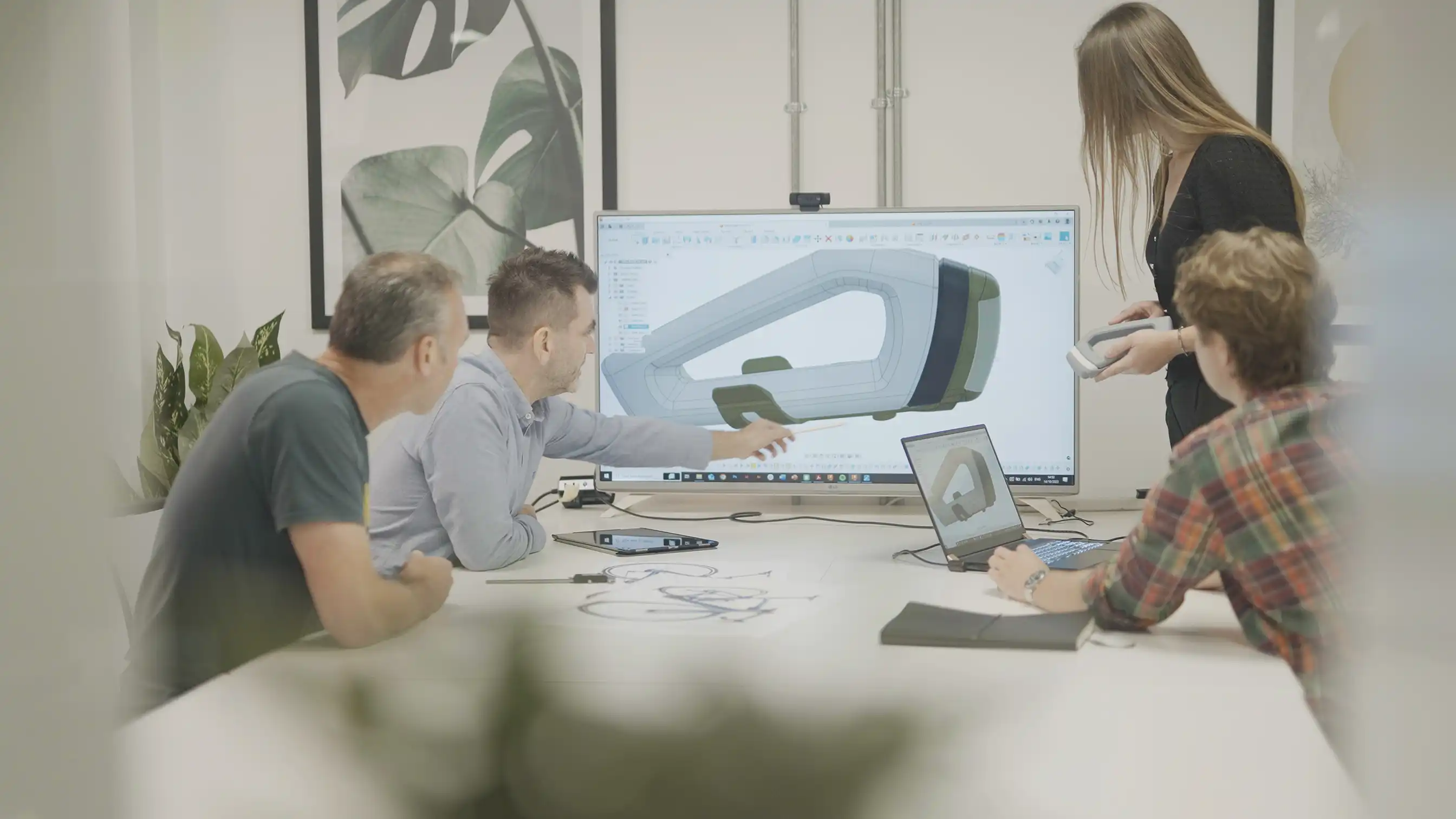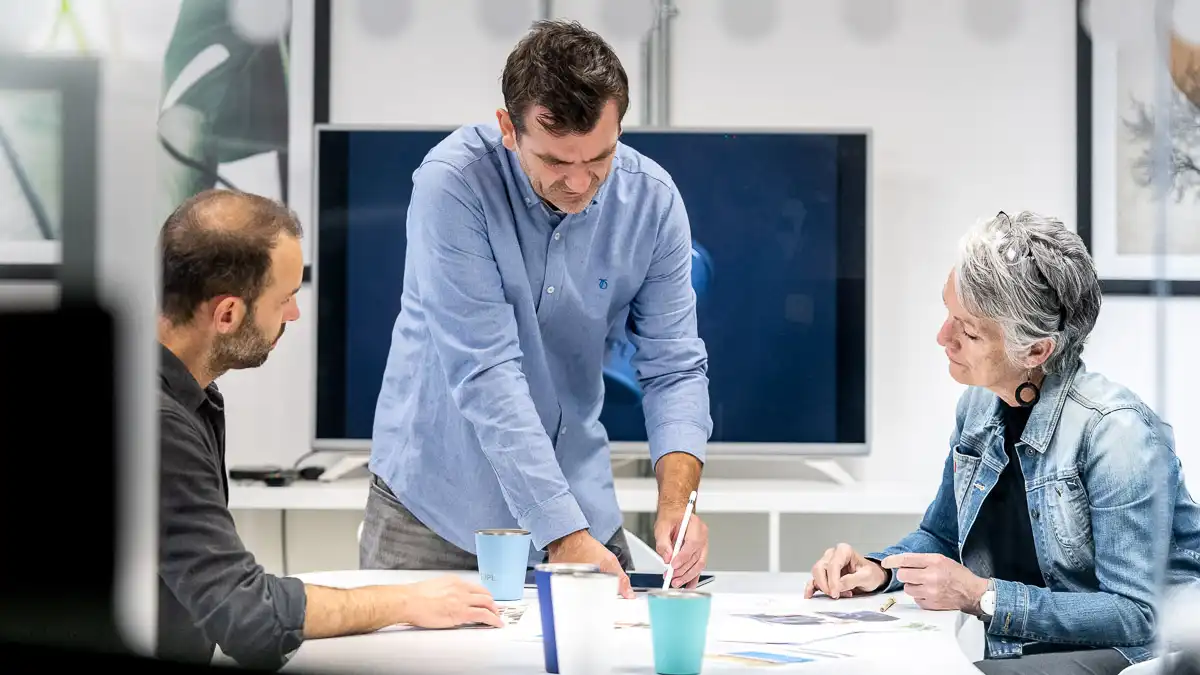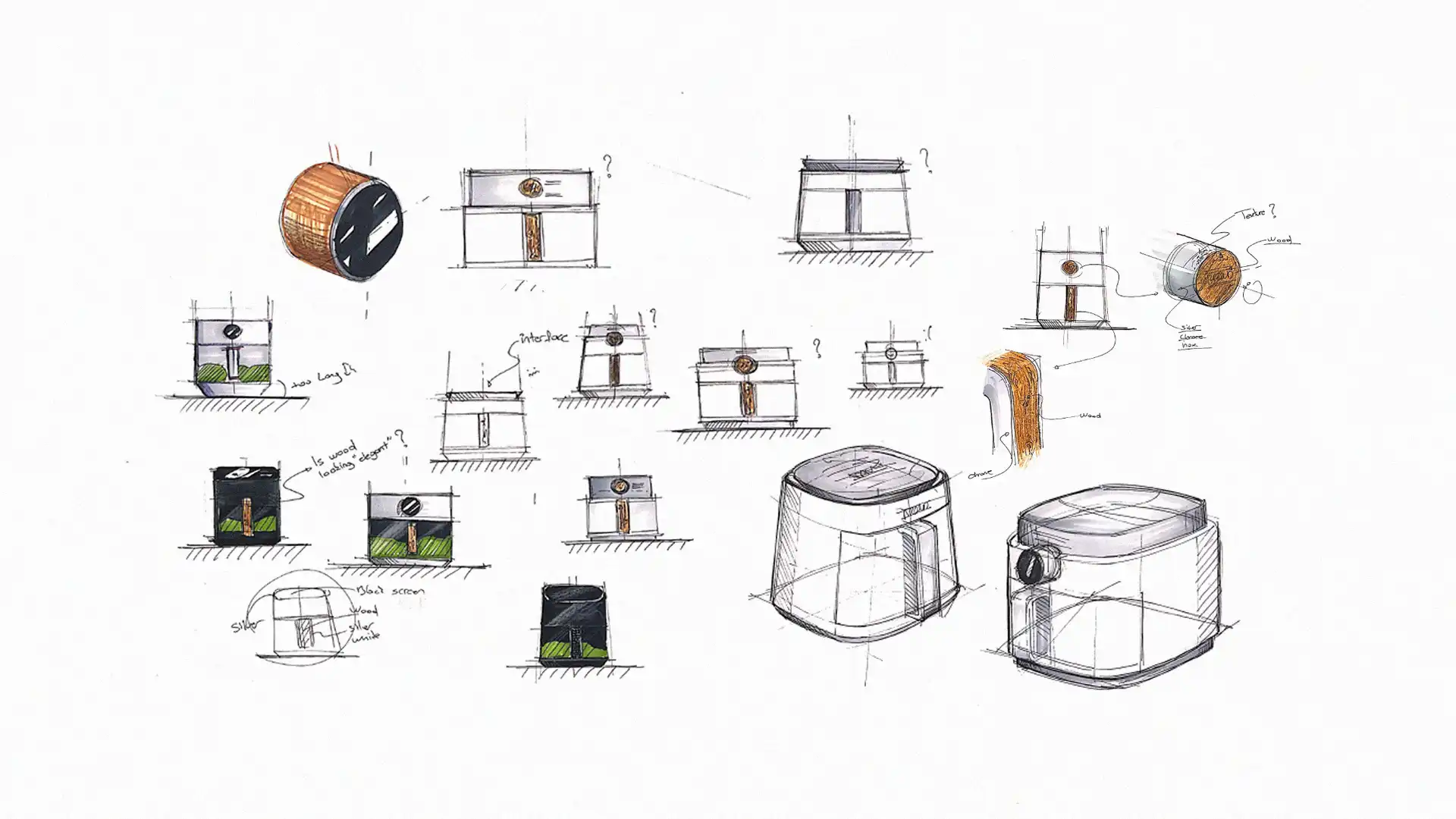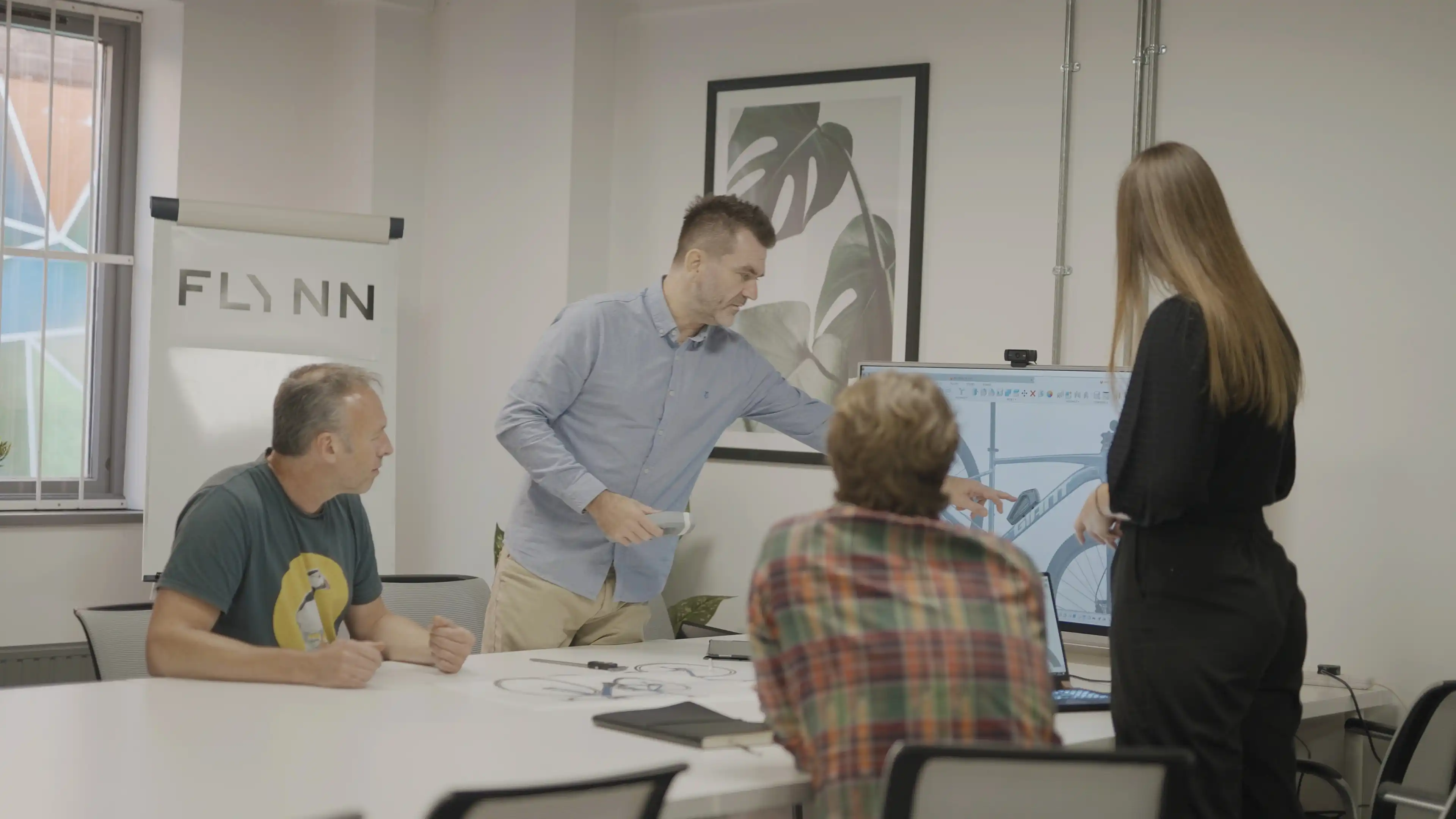How to Bring a Product to Market: A Practical 10-Step Guide for Founders
How to Bring a Product to Market: A Practical 10-Step Guide for Founders
For founders and teams ready to turn an idea into something real.
Bringing a product to life starts with a spark, that moment when you sense something new should exist. But turning that spark into a real, meaningful product is where the real work begins. At FLYNN, we’ve spent decades guiding founders and businesses through this product development process, from early sketches to market-ready products, learning what accelerates progress, what creates risk, and what consistently leads to success.
This guide distils that experience into a clear, practical path. While it’s laid out in a linear sequence, product development is rarely linear in practice. It moves in loops, exploring, testing, iterating, and adjusting based on what you learn. A strong process embraces this rhythm, reducing risk and strengthening the product at every turn.
What follows is a structured overview of a process that is, by nature, fluid, designed to help you understand the journey while reflecting the realities of how products truly come to life.
1. Choose the right product design consultancy (your most important early decision)
Before you validate, sketch, prototype, or engineer, you need the right partner, because the team you choose will shape the trajectory of your idea, your investment, and your eventual impact.
A strong product design consultancy becomes:
- Your strategic guide
- Your creative challenger
- Your engineering conscience
- Your manufacturing translator
- Your partner in ambiguity and acceleration
What to look for:
- Curiosity over certainty - do they ask sharp questions before offering solutions.
- Systems thinking - products sit within supply chains, regulations, and behaviours.
- Ability to design for scale - not just beautiful prototypes, but products that survive tooling and real use.
- Collaborative mindset - the work should feel energising, not intimidating.
- Sustainability depth - environmental responsibility shapes material and manufacturing choices from day one.
- Honesty over appeasement - you don’t want a partner who simply says “yes” to everything. You want someone who challenges your thinking, pressure-tests your assumptions, and focuses on bringing the strongest, most commercially viable version of your product to market

Why many teams choose to work with FLYNN
FLYNN is known for:
- Turning early ideas into clear, strategic product directions
- Balancing vision with manufacturability
- Designing for long-term environmental responsibility
- Maintaining a working style that is warm, collaborative, honest, and deeply human
- Guiding teams from early exploration through to production without losing the heart of the idea
The right consultancy doesn’t just “design your product”. They help you build the version of it the world actually needs.
2. Validate the problem
Once you have the right partner, the first shared task is understanding whether the problem behaves the way you think it does, and a good design consultancy will actively support this. They’ll bring industry insight, technical experience, and market awareness that help you analyse the problem more objectively.
Validation isn’t about defending your idea. It’s about expanding its potential.
A strong partner will help you:
- Observe real user behaviour
- Uncover hidden pain points and workarounds
- Test the true stakes of the problem
- Identify where the commercial opportunity actually lies
- Explore variations of your idea that may perform better in the market
Don’t let early attachment to your initial idea limit what the product could become. The goal is to choose a direction based not on personal bias, but on what user’s value and what the market will reward.
This clarity sharpens your product direction and reduces risk.

3. Develop an optimised brief and product specification
Before any sketching or CAD work begins, you and your design partner take the time to build a robust, optimised brief and product specification. This is one of the most important, and most commonly misunderstood, stages in product development.
A well crafted brief gives your product the foundations it needs to win. It sharpens the purpose, defines the parameters, and ensures every decision that follows is anchored in market insight rather than assumption.
A strong consultancy will help you:
- Analyse your solution with commercial objectivity
- Identify what the product truly needs to succeed
- Define must‑haves, nice‑to‑haves, and non‑negotiables
- Establish performance, cost, and sustainability targets
- Surface risks early and reduce them before they become expensive
When this stage is rushed, the whole project suffers. If the brief is wrong, the final product will be wrong, no matter how good the design work is.
Taking the time to optimise your specification maximises ROI potential from the very beginning, setting you up for a smoother, faster, and more successful development journey.

4. Translate the idea into early product directions
With clarity in place, exploration begins. This is where your idea opens up, before it narrows into a single, confident direction.
A strong design partner will help you explore the full breadth of what your product could be, not just the version you first imagined. This prevents premature convergence and reveals opportunities you may not have seen.
A consultancy will:
- Map user journeys to understand real-world context
- Explore opportunity spaces around behaviours, environments, and unmet needs
- Generate early concept directions that vary in ambition and complexity
- Visualise approaches through sketches, models, or quick digital renders
- Challenge assumptions constructively to keep thinking sharp and grounded
This step gives you options, credible, considered pathways. The goal is to develop several possible routes, stress-test them, and then converge on a product direction that balances user value, commercial opportunity, and technical feasibility.

5. Build your brand identity alongside your product
Your product and brand should evolve together, each strengthening and clarifying the other. When they’re developed in isolation, misalignment creeps in, a thoughtful product wrapped in the wrong story, or a confident brand tied to a product that doesn’t quite express it.
A strong design partner will help you:
- Define the brand foundations that give your product meaning and context
- Ensure the product experience reflects the brand’s personality, values, and promise
- Create visual and verbal identities that strengthen how the product is perceived
- Align product design decisions with brand expression (materials, details, tone, behaviours)
- Avoid the mismatch that happens when brand and product teams work in separate silos
When product and brand evolve together, they reinforce each other, the product becomes a physical embodiment of the brand, and the brand amplifies the value of the product.
True product–brand fusion ensures that the product’s features, materials, interactions, and overall experience clearly express the brand’s purpose and values. Likewise, the brand should be shaped by what the product does best, its strengths, its character, its point of difference.
A good product–brand relationship feels inevitable, as if one could not exist without the other. When done well, it builds trust, consistency, and emotional connection, it becomes hard to tell where the product ends and the brand begins. When done poorly, it creates friction, confusion, and a sense that something just doesn’t fit.

6. Develop concepts that balance form, function, and feasibility
Concept development is where creativity meets constraint. This stage transforms strategic direction into tangible possibilities, shapes, interactions, behaviours.
Product design and engineering happens in parallel, not sequence. This avoids the classic trap of creating something beautiful that can’t be made, or something manufacturable that lacks character.
Your partner will:
- Prototype early and often, using quick tests to steer decisions
- Evaluate ergonomics and usability with real hands and real motions
- Balance aesthetics with manufacturability to avoid cost or tooling surprises
- Consider environmental impact from the outset, materials, lifecycle, repairability
- Explore virtually and physically to understand form, proportion, and user interaction

7. Prototype with purpose
Prototyping is where assumptions become validated, and that’s precisely why it’s essential.
Prototypes aren’t there to impress; they’re a tool, used to inform and answer questions. Each one should have a clear purpose: test a mechanism, validate ergonomics, explore user interaction, evaluate materials, or uncover failure modes.
You’ll explore:
- Form models to test proportion and feel
- Functional rigs to validate core mechanics or electronics
- Interaction tests to understand behavioural patterns
- Failure patterns to learn how the product behaves under stress
- Behaviour under real-world use, not controlled environments
A good partner will keep prototypes purposeful and fast-moving. Iteration reduces risk before expensive tooling begins. The more you learn now, the fewer surprises you’ll face during manufacturing.

8. Engineer for manufacturing and scale
Once the concept is validated, manufacture engineering matures the product into something that can be built consistently, cost effectively, and responsibly at scale.
With a strong design partner, Design for Manufacture (DFM) starts long before this stage. Throughout concept development, they’ll be considering draft angles, wall thicknesses, assembly methods, material constraints, and tooling implications, ensuring ideas remain grounded in manufacturing reality.
But once your concept is finalised, you move into final DFM and value engineering. This is where the product is refined for production efficiency, cost optimisation, and reliability.
At this stage, you’ll begin active discussions with manufacturers to:
- Gather production feedback on feasibility, risks, and potential improvements
- Understand likely production costs and identify cost‑saving opportunities
- Validate or refine material and process choices
- Align expectations around tolerances, tooling, and lead times
This is a rigorous stage where every decision has consequences, from component selection to assembly methods to long-term durability.

9. Move into production and launch
Once development is complete, you begin the transition from design into production, a phase that is equal parts exciting and operationally demanding. This is where your product leaves the studio and enters the real world of factories, supply chains, and commercial commitments.
A good consultancy, like FLYNN, will guide you through this journey, helping you avoid common pitfalls and make informed decisions that protect your timelines, costs, and product integrity.
This stage includes:
- Selecting manufacturing partners who align with your quality, cost, and sustainability goals
- Building and validating your supply chain, ensuring resilience and clarity before scaling
- Tooling for injection moulding, casting, stamping, or other processes based on your chosen manufacturing route
- Pilot runs to validate production lines, catch issues early, and refine assembly methods
- Quality assurance processes that define tolerances, inspection methods, and what "good" looks like across batches
- Packaging design that protects the product and enhances the customer experience
- Assembly, testing, and certification procedures to ensure consistency and compliance
- Launch readiness, aligning product availability, logistics, support, and market messaging
- Post‑launch learning, turning first‑wave user feedback into actionable insights for future iterations
Production is rarely a straight line, but with the right partner steering the process, you can navigate it with confidence. The goal is simple: ensure the product that reaches customers is robust, reliable, and faithful to the intention that started it all.

10. Develop your go to market and launch strategy
A successful product doesn’t just need to be well designed, it needs to enter the world in a way that resonates. Your go to market plan shapes how people first encounter your product, understand its value, and decide whether it belongs in their lives.
Although this step sits toward the end of the development journey, in reality it should begin much earlier. The most effective launches are built in parallel with product development, not rushed together at the end.
A strong go to market strategy includes:
- Clear brand messaging that aligns with your product’s purpose and personality
- Storytelling and communication assets, imagery, copy, digital content, demonstrations
- Channel planning, whether direct‑to‑consumer, retail, or hybrid
- Marketing activities that build anticipation and educate users
- Customer experience design, from unboxing to onboarding
- Feedback mechanisms that allow you to learn quickly post‑launch
When done well, your go to market strategy becomes an extension of the product itself, expressing its value, framing its narrative, and helping it find its audience. And when you develop it early, it strengthens decisions throughout the design process.

The Takeaway
You already have the idea. This roadmap brings it into the world, responsibly, confidently, and creatively.
And it all starts with Step 1: choosing a design consultancy that elevates your idea rather than diluting it.
Bringing a product to market can feel daunting, especially for first time founders. But it doesn’t have to be. With the right partner, a team like FLYNN, you’re not navigating this journey alone. You have decades of product development experience beside you: designers, engineers, strategists, and collaborators who understand how to turn early ideas into commercially successful, meaningful products.
A great partner guides you through uncertainty, helps you make smarter decisions, and ensures every stage, from insight to brand, from prototype to production, works together to build something that lasts.
With the right support, the path becomes clearer. You bring the idea. Together, we bring it to life.
We provide businesses with product design consultancy, industrial design, prototype design & related services.
.avif)


